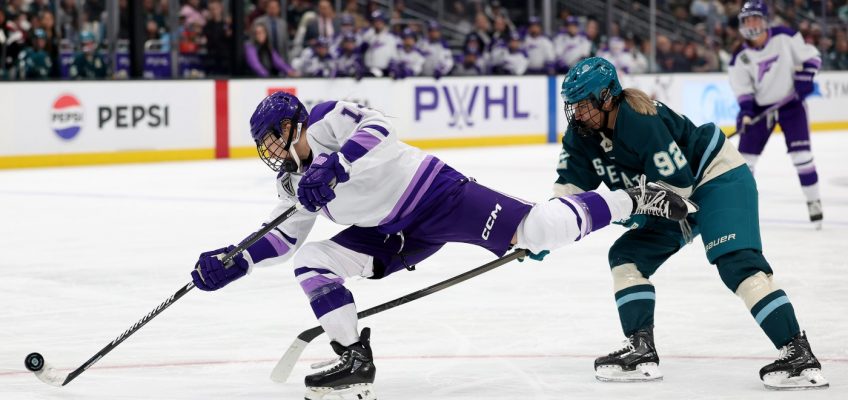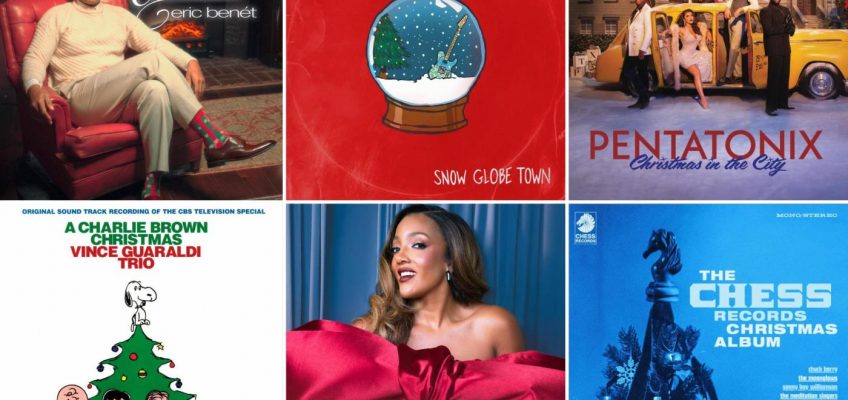By Stephanie Breijo, Los Angeles Times
LOS ANGELES — Last fall, I financially blacked out and splurged on a luxury lifestyle advent calendar. I blissfully uncovered a new face serum or silk eye mask or bath oil daily. Naturally, I fell down the rabbit hole and dove into the advent universe. I strolled aisles of festive-patterned packages in the likes of World Market and devoured online reviews and the unboxings that have helped fuel advent-calendar mania.
It was like seeing the holidays through the looking glass: a method of celebrating that I’d never considered in adulthood, and one it seemed millions of people around the world were increasingly living. For those who’ve embraced the advent-calendar lifestyle, every day is a celebration beginning Dec. 1.
For roughly a century, children have punched out numbered doors to discover candy, trinkets or holiday messages that tick off the days of December. But due to a recent boom in popularity and a new allure for adults, now there are advent calendars for candles, jewelry, fishing tackle, makeup, dog treats, perfumes, nail polish and Legos. But some of the world’s most enticing might be those dedicated to your favorite foods.
Cheese, caviar, hot chocolate, spices, Japanese snacks, wine, hot sauce, coffee and canned cocktails can be found behind little drawers and paper doors this year. Even Jeppson’s Malört, that oft-maligned liqueur native to Chicago, just announced a calendar for “25 days. 25 shots. 25 questionable decisions.”
Dandelion Chocolate released an advent calendar this year with a celestial theme and design. (Myung J. Chun/Los Angeles Times/TNS)
The competition for them can be fierce, and the prices high. Some sell out months before Christmas. Reddit threads, social media and other online message boards devoted to advent calendars act as sounding boards for — and reviews of — the best values and hottest picks each year.
“It’s really exploded,” said Fredrik Nilsson, the chief executive of luxury licorice company Lakrids by Bülow. “It’s unbelievable.”
The Copenhagen-based sweets company claims to be one of the first culinary advent calendars marketed to adults. Year-round, the brand wraps licorice in an array of layered chocolate and candy shells. For the holidays, Lakrids produces two advent calendars. The version found in the U.S. includes 24 days of the colorful licorice spheres in a black-and-gold box inspired by Nordic aesthetics ($69.99); the other, available only in Europe, is shaped like a giant jar.
Their inspiration came from the candy itself: an adult-oriented take on a childhood classic that wraps licorice in gourmet flavors like tart strawberry or elderflower.
“When I grew up, everyone had a calendar, but it was definitely something for kids,” Nilsson said. “Adults would not have a Christmas calendar. And when we, back in 2011, did our very first Christmas calendar, it was — if not the first — one of the first calendars targeting adults.”
In 2011, the company sold 1,000 of them. Now the confectionery makes 300,000 each year. It’s the fourth year of the advent calendar’s availability in the U.S., and sales have already roughly doubled compared with 2024.
What’s behind the trend’s appeal? One maker has a theory. Jing Gao owns L.A.-based chile crisp company Fly by Jing, which bottles fragrant spices and chiles from Sichuan, China. Gao said the allure for customers is in a daily dose of the unknown: In a society enamored with Labubus and other blind-box items, the thrill of each day containing a wrapped, hidden gift offers “whimsical surprise and delight.”
Fly by Jing released an advent calendar with mini-jars of spices and sauces and packages of noodles. It doubled production this year, but it was gone by Nov. 10. (Myung J. Chun/Los Angeles Times/TNS)
This year, Fly by Jing’s mini-jars and other, newer products come in a large, hand-packed red box decorated with illustrated pandas and gold embossing ($98). It’s the second year of Fly by Jing’s advent calendar. As soon as her team wrapped production on 2024’s box, they began planning and coordinating this year’s. For 2025, it includes a reprise of mala spice mix along with two new products that would be too expensive to produce on a larger scale: a shallot sauce and a barbecue rub.
Last year’s calendar sold out in two to three weeks. This year, even with double the production, it was gone by Nov. 10.
Gao grew up in Europe and, especially during her years in Germany, loved advent calendars at the holidays. Then she didn’t think about them for 20 years.
When she began seeing food and beauty brands launch calendars, it only made sense to join them: Gao’s chile crisps always see a spike in sales during the holidays and she already offered gift sets.
The advent calendars are “kind of a playground for us,” Gao said, “where we can still have fun and test different things.”
They can also be a way to dabble in luxuries that might not fit the budget throughout the year. Just as consumers can splurge on couture calendars from fashion brands such as Dior ($750) and Christian Louboutin ($720), extravagance — and brow-raising price tags — can extend into food.
A luxury-branded advent calendar from Williams Sonoma ($350) includes copper-bakeware ornaments, aged balsamic, specialty candies and imported spices. The sold-out Dandelion Chocolate calendar ($198 for one person, or $328 for two) featured a celestial theme and design, with each of the 25 chocolates corresponding to the solar system’s moons, complete with a star map.
For those who indulge in it, the holidays are peak season for caviar — and the San Francisco-based Caviar Co.’s 12-day advent calendar costs $945.
A red-and-gold treasure chest arrives in a styrofoam cooler stuffed with ice packs; the advent calendar is stored in the refrigerator, filling up shelf space with gold embossing and foil stamping.
“I like to say there’s a different caviar for every day of the week,” said chief executive and co-founder Petra Bergstein Higby, who operates the company with her sister.
Each caviar calendar includes two mother-of-pearl spoons, a caviar-tin key, recipe cards and a dozen 1-ounce jars of caviar and roe: some smoked, some standard, some ultra-high-end. In 2025, a “wild card” was added: the beluga-surgeon hybrid, a variety not currently for sale à la carte on the website.
Many customers say they’re purchasing as a gift, but others split it among friends for caviar-tasting parties or events like Friendsgiving, which makes the price more accessible.
While luxury can signal festivities, some of the culinary world’s most popular advent calendars run a fraction of the cost: Walker’s buttery, crunchy shortbread cookies ($31.99), Vahdam’s foldable tea collection ($24.99), Tony’s Chocolonely’s 24-door chocolate menagerie ($39.99).
But perhaps the most beloved and budget-minded calendar of all arrives in the form of two dozen mini-jars of jams and spreads. The Bonne Maman advent calendar ($54.99) has seen 400% growth since its 2017 debut, according to a company representative. Thousands of TikTok and Instagram videos have unboxed, taste-tested and ranked their way through the annual box.
The Bonne Maman advent calendar debuted in 2017 and has seen 400% growth, fueling a social-media trend to unbox, taste-teste and rank the company’s mini-jars of jams. (Myung J. Chun/Los Angeles Times/TNS)
To explore the world’s most famous countdown of of French jams, I’d have to call in an expert: There’s no one more dedicated to the cause of the Bonne Maman calendar than my longtime friend Michael-Birch Pierce, a visual artist who, every year, seemingly transforms into a jam influencer with the stroke of Dec. 1.
In 2021, Pierce saw an Instagram post about the calendar and immediately purchased one. It was love at first spread. Deathly allergic to chocolate and caffeine, Pierce could never partake in more traditional advent calendars.
“I never understood the joy of an advent calendar, really,” said Pierce.
Now each morning every December, they toast an English muffin or bagel and run a hearty smear over each side. One year they saw someone using the dredges of a larger jar to make a cocktail, so Pierce used the mostly finished mini-jars for jam-imbued shots. A handful of TikToks and Instagram reels point fellow jam fiends to other uses: Make a fruity cold foam to top coffees, use them in cookies, fill empty jars with homemade beeswax candles or lip balms.
Plans in the works to honor Gordon Parks in downtown St. Paul
Spirit, Frontier offer steep air travel discounts in Black Friday dogfight
Paris’ Louvre museum to increase ticket price for visitors from outside the EU
German Baumkuchen ‘tree cake’ survived a disaster and world wars to become a Japanese favorite
CNN anchor Bianna Golodryga takes on antisemitism in new YA book
Last year while traveling for work, Pierce removed the jars from the festive paper cubby holes, wrapped them in paper towels without peeking and stuffed them into the suitcase to open while on the road and be enjoyed at their hotel’s continental breakfast.
Come December, Pierce posts about each day’s flavor; through the years, thousands of friends have followed along, and dozens have purchased the calendar because of it.
“They text me about it all the time,” Pierce said. “People are waiting for my posts about it every day like, ‘Did you stop eating the jam?’ No, I will never stop eating the jam.”
©2025 Los Angeles Times. Visit at latimes.com. Distributed by Tribune Content Agency, LLC.




